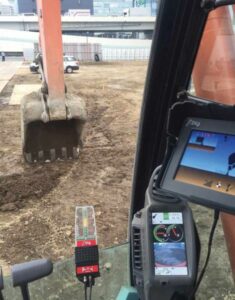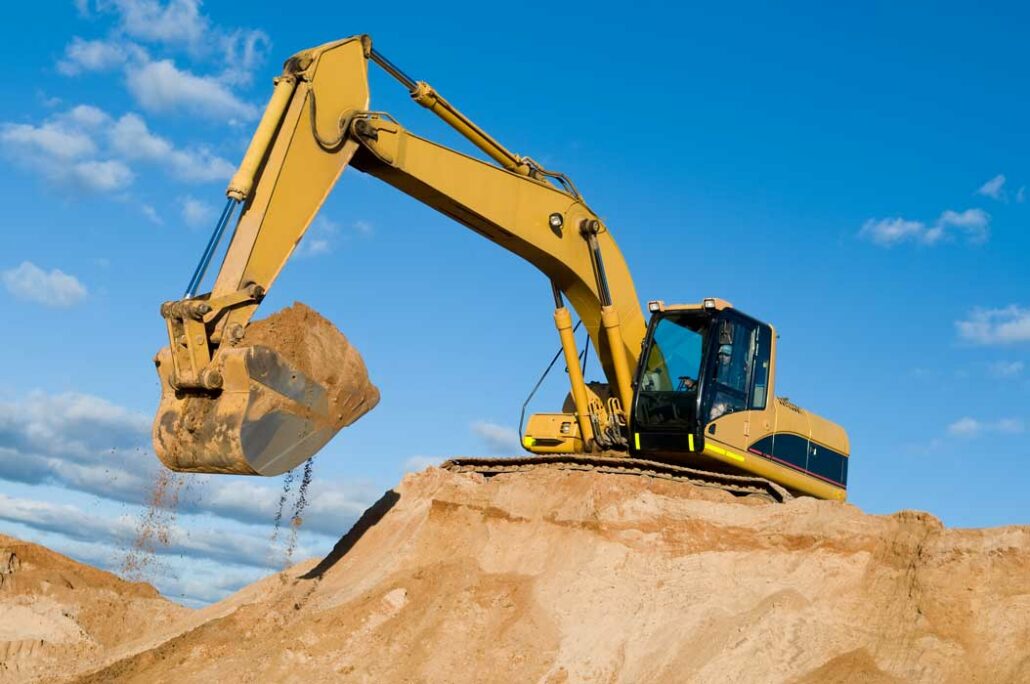When looking to invest in the best excavator control systems, there are fundamental differences between 2D and 3D machine guidance systems which, when optimised, can facilitate greater job productivity, accuracy, and efficiency.
Each excavator control system will aim to fulfil the same essential function – tool positioning, however, both methodologies do not yield equal results. The primary point of difference is broken down to how both 2D and 3D variants utilise different technology to provide positioning assistance and guidance solutions.
2D Control Systems commonly take advantage of both physical landmarks and laser technology to reference benchmarks throughout the excavation process while 3D Control Systems have the advantage of GPS Machine Control technology, which can digitally project site plans and generate real-time data to provide accurate positioning.
Each machine control system comes with a range of benefits which can be optimised according to site specifications and overarching project scopes. While 3D GPS Machine Control evidently gives access to greater functionality, the associative costs may not be relevant or cash-flow conscious – two critical considerations of smaller development projects.
The easiest method to understand which machine guidance alternative is most suitable to your project comes down to how they ‘work’. Understanding the technology and variety of benefits which underpin each system can help narrow the selection process and ultimately guide your decision.

As a common choice across more traditional excavation projects, the 2D Machine Control System provides access to cost-efficient guidance methods which focus on enhancing machine utility and maximising return-on-investment.
The 2D Excavator Control System is quite simplistic in its guidance approach, taking advantage of physical landmarks, stakes or laser technology for reference during operation. This serves to provide or create accurate benchmarks that increase the accuracy of excavation processes. In Layman’s terms, 2D Systems purvey essential information allowing operators to know excavation depth and distance.
These systems are heavily utilised across smaller and more simplistic projects, providing essential information that reduces downtime across core products such as flatwork-prep, foundation work and trenching initiatives.
Though not as complex as their 3D GPS counterparts, the 2D Machine Control System offers a large up-side to worksites and may circumstantially be a better investment across specific projects. 2D Excavation Systems are distributed for a lower-upfront cost with a range of tangible benefits that are proven to enhance productivity, accuracy, and efficiency. Primary benefits include:

As the leading solution to machine guidance and precise positioning, the 3D Machine Control System utilises advanced technologies to define ‘real-time’ data and provides unmatched accuracy to combat common worksite challenges.
The 3D Machine Control System takes a more complex approach to machine positioning that often entices prospective buyers with the advantage of enhanced accuracy, reliability, and efficiency. These systems utilise locating technology such as GPS, Antenna, or LPS to track exact machine positioning and in cases, generate digital terrain models. Again, in Layman’s terms, 3D Systems position digital site plans in-front of the machine operator, providing exact grade location and reducing the need for manually set stakes.
These systems are utilised across larger and more complex projects that prioritise leading productivity, accuracy, and downtime reduction. When using 3D Machine Control Systems, operators gain access to exact machine locations and site specifications which overall, produces leading results.
Though the 3D Machine Control Systems provide a greater up-side than their counterparts, the investment may not be worth it for some. These control systems are significantly more costly with more system components and enhanced functionality that requires data model preparation and more complex training. Despite this, when dealing with large or long-term projects, 3D Machine Control provides more tangible benefits and often leads to a greater return-on-investment. Primary Benefits Include:
To best facilitate project results, there must be an understanding of both site and budgetary requirements. Each control system must be optimised for your individual needs based on unique specifications which should be easily identifiable. The most common factors which can help dictate whether to purchase a 2D or 3D Excavator Control System include:
Price – Budgets can often be a limiting factor when determining which technology or methods to use across a worksite. 2D Systems are notably more cost-effective, however, provide limited functionality and less accuracy than 3D Counterparts. The cost is derived from increased componentry which when adhering to a budget, may not be a viable option.
Time – When analysing time restrictions, both staff training and manual labour need to be taken into consideration. 3D Control Systems have the advantage of reducing excessive downtime by reducing the need for manually set stakes and constant recalibration. The trade-off here is an increased turnaround time in staff-training as data model preparation and modelling basics can take longer than a day to learn. Both viewpoints must be taken into consideration when looking to purchase machine guidance technology.
Functionality – Perhaps the most important element when deciding which machine control system is optimal for your project is the functionality and results that you require. By nature, 3D GPS Systems offer significantly more features that enhance accuracy and project results as machine positioning and grade specifications are tracked exactly. When looking to simply measure excavation depth and distance, 2D variants may be suitable for your project, however, if seeking advanced technology that integrates with site plans – 3D Systems will be required.
Topcon announces 3D machine control compatibility options for Caterpillar excavators

Kami membangun bisnis dengan memberikan solusi teknologi konstruksi untuk meningkatkan produktivitas pelanggan kami.
PT Aptella Solusi Teknologi
NPWP: 70.620.776.8.017.000
2024 Aptella | NPWP: 70.620.776.8.017.000 | Terms and Conditions | Privacy Policy